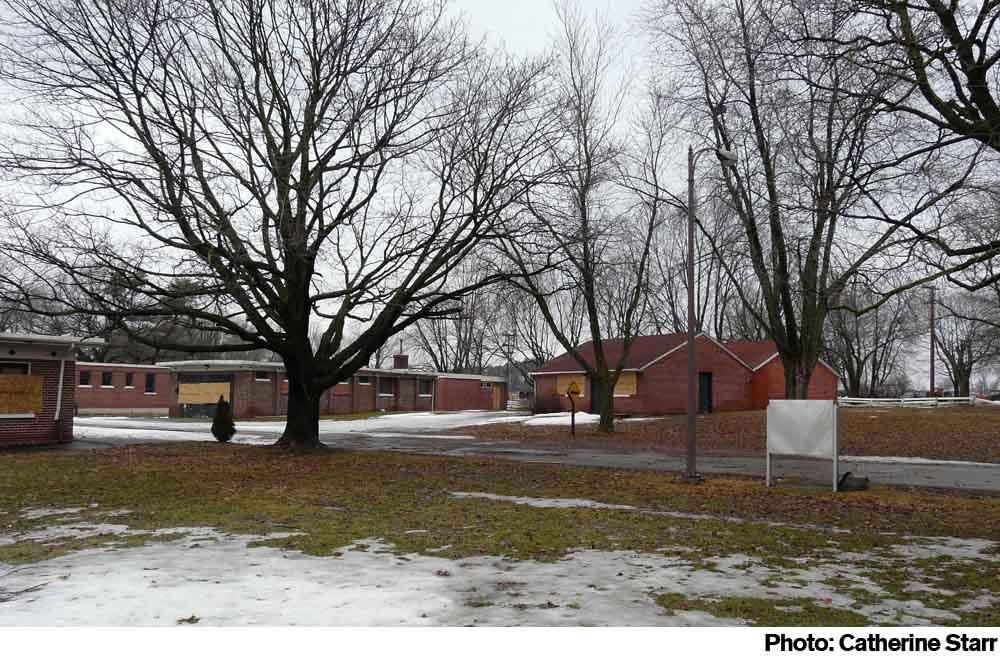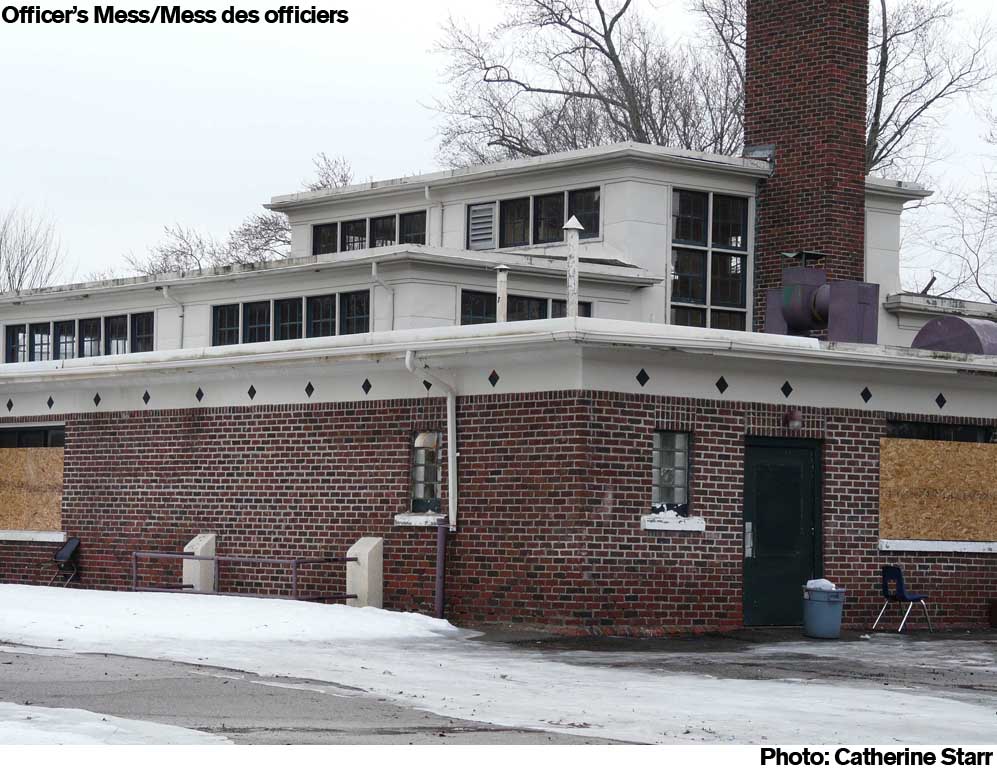
POW Camp 30/Boys Training School National Historic Site
2020 Lambs Road, Clarington, Ont—NEWLY DECLARED NATIONAL HISTORIC SITE IS STRUGGLING AGAINST TIME AND VANDALS
 Why it matters
Why it matters
In 1925 John Jury donated 106 acres of land to the Province of Ontario for the construction of a reformatory school, on the outskirts of Bowmanville. During WWII it was transformed into a Canadian-run POW camp for hundreds of captured German officers, including such notable officers as U-Boat Commanders Otto Kretschmer and Wolfgang Heyda. Known as Camp 30, it is the last intact POW camp in Canada. After the war it was home to a succession of private schools that took advantage of the ready-made campus, playing fields and generating plant. The last school, Darul Uloom Islamic University vacated in 2008. The following year it was purchased for private development.
Acting on the advice of the Ontario Heritage Trust, the municipality of Clarington included the site and six of what were originally 18 buildings, on its Register of Properties of Cultural Heritage Value or Interest.
Why it’s endangered
The property was purchased by Kaitlin Group who wants to develop housing subdivisions on the northern and southern portions of the site. Although the developer has decided not to demolish the POW Camp 30’s buildings and has expressed a willingness to donate that section of the property to the municipality, it is far too big a project for the small municipality to take on. In the meantime, Camp 30 has fallen victim to vandalism and fire that has resulted in the demolition of the former administration building.
 The municipality has given Kaitlin Group permission to demolish up to eight buildings that hold little architectural or historic value, such as locker rooms and storage facilities. The main structures—the administrative buildings, dormitories, concert hall and infirmary, however, are worthy of preservation.
The municipality has given Kaitlin Group permission to demolish up to eight buildings that hold little architectural or historic value, such as locker rooms and storage facilities. The main structures—the administrative buildings, dormitories, concert hall and infirmary, however, are worthy of preservation.
Where things stand
In April, 2013 POW Camp 30 was designated a National Historic Site by the Government of Canada. Work is now underway to try and establish a stewardship foundation to help restore the site. Clarington has commissioned an Integrated Planning Solutions study that made a number of recommendations, including converting it into a tourism and convention venue. However Faye Langmaid, manager of special projects for Clarington, told the Globe and Mail that the project is far too big for the municipality to handle on its own.
In 2014, Clarington Municipal Council established a committee to create a long-term plan for the site and announced $45,000 to hire a consultant to determine the site’s liability and recommend possible uses for its buildings. In addition, the newly established Jury Lands Foundation has begun negotiations with Kaitlin Group to explore whether ownership of the sites lands and building could be transferred to the foundation. These long-awaited developments bring new hope for preservation of the site, whose restoration costs could run as high a $15 million. In the meantime, the historic buildings continue to deteriorate at a rapid rate.
UPDATE: On February 10, 2015, a meeting was convened by the Municipality of Clarington to discuss the future vision for the Camp 30/Boys Training School National Historic Site. Facilitated by the National Trust for Canada, the workshop style meeting's purpose was to discuss and identify ways and potential solutions to regenerate this nationally significant property to the benefit of:
- Owners
- The community as a whole
- Camp 30/Boys Training School National Historic Site
The workshop brought all the key stakeholders together in a spirit of collaboration and many ideas were generrated that would benefit the site, including the idea of the 1,000-foot trail. In October 2015, City Council approved funding for the trail that will allow residents and visitors to follow in the footsteps taken by prisoners of war over 70 years ago.
UPDATE: In July 2016, the Muncipality of Clarington announced that it would purchase a portion of the site and restore some of the historic buildings.
Top 10 Endangered Places
- Explore Past Listings
- National
- British Columbia
- Alberta
- Saskatchewan
- Manitoba
- Ontario
- Our Lady of Assumption Church
- 24 and 28 King Street East, Gore Park
- 24 and 28 King Street East, Gore Park
- Abell
- Alma
- Amherst Island, north-eastern shore of Lake Ontario
- Bala Falls
- Bata
- Davisville Junior Public School/ Spectrum Alternative Senior School
- Districts
- Former Grand Trunk Railways Locomotive Repair Shops
- Gibson Isolation Hospital
- Hamilton Education
- Joachim
- Kingston Collegiate Vocational Institute (KCVI)
- Lister
- Nor’Wester Mountain Range and Loch Lomond Watershed Reserve
- Nottawasaga Lighthouse
- Ontario - Views
- Ontario Place
- Ottawa - Lansdowne Park
- POW Camp 30/Boys Training School National Historic Site
- Petrie Building
- Port Dalhousie
- Somerset House
- The Black Horse Pub and Pig’s Ear Tavern
- Tivoli Theatre
- Views of Legislative Assembly of Ontario Building
- Ontario - Porter/McKinley Block
- Brighton Public School
- Cockshutt
- The Barber Paper Mill
- Bellevue House
- Central Experimental Farm
- Guild Inn
- David Dunlap Observatory and Park
- Riverdale Hospital
- The Old Grand Trunk Railway Station
- Quebec
- New Brunswick
- Nova Scotia
- Prince Edward Island
- Newfoundland and Labrador
- Territories
- Worst Losses Archive
- Nominate a Site
